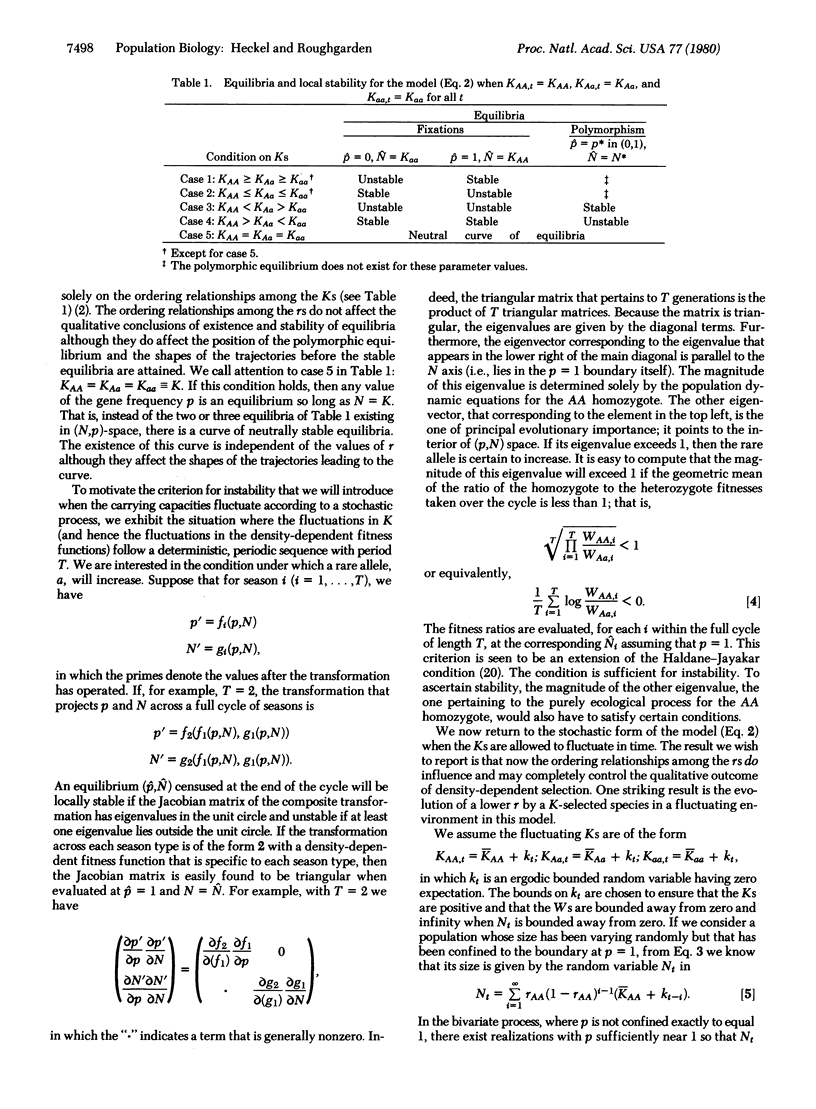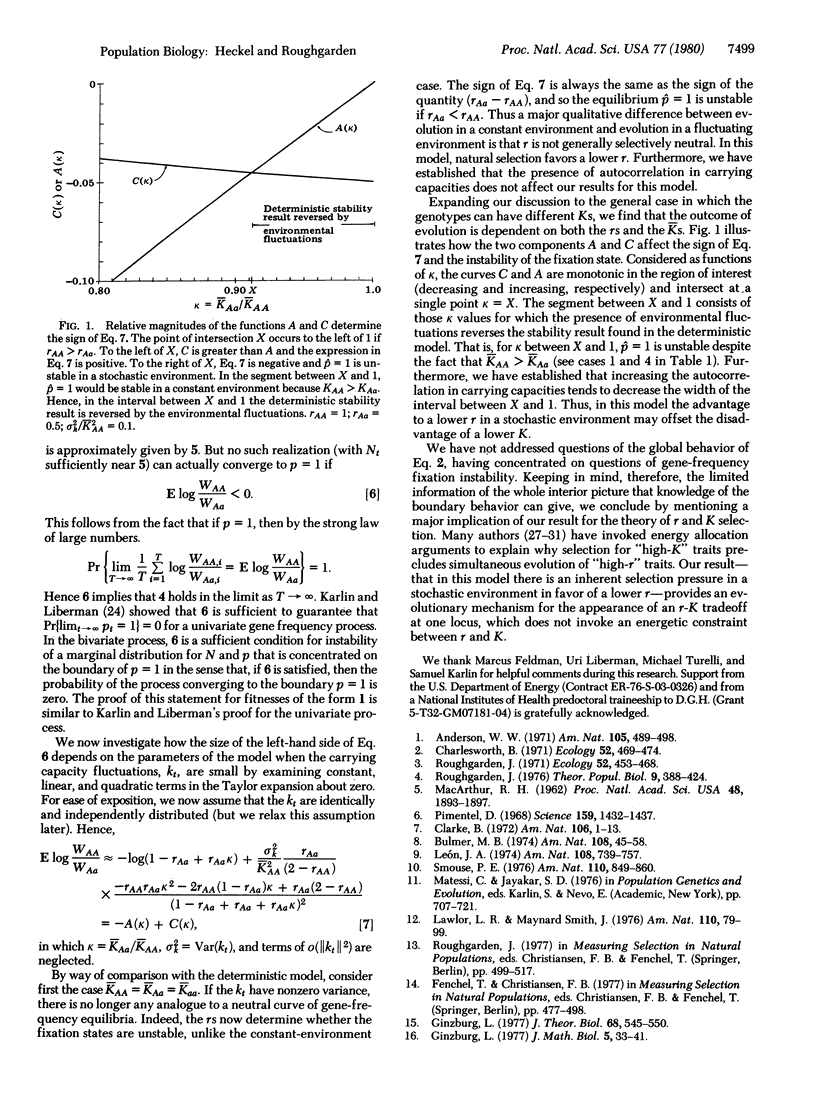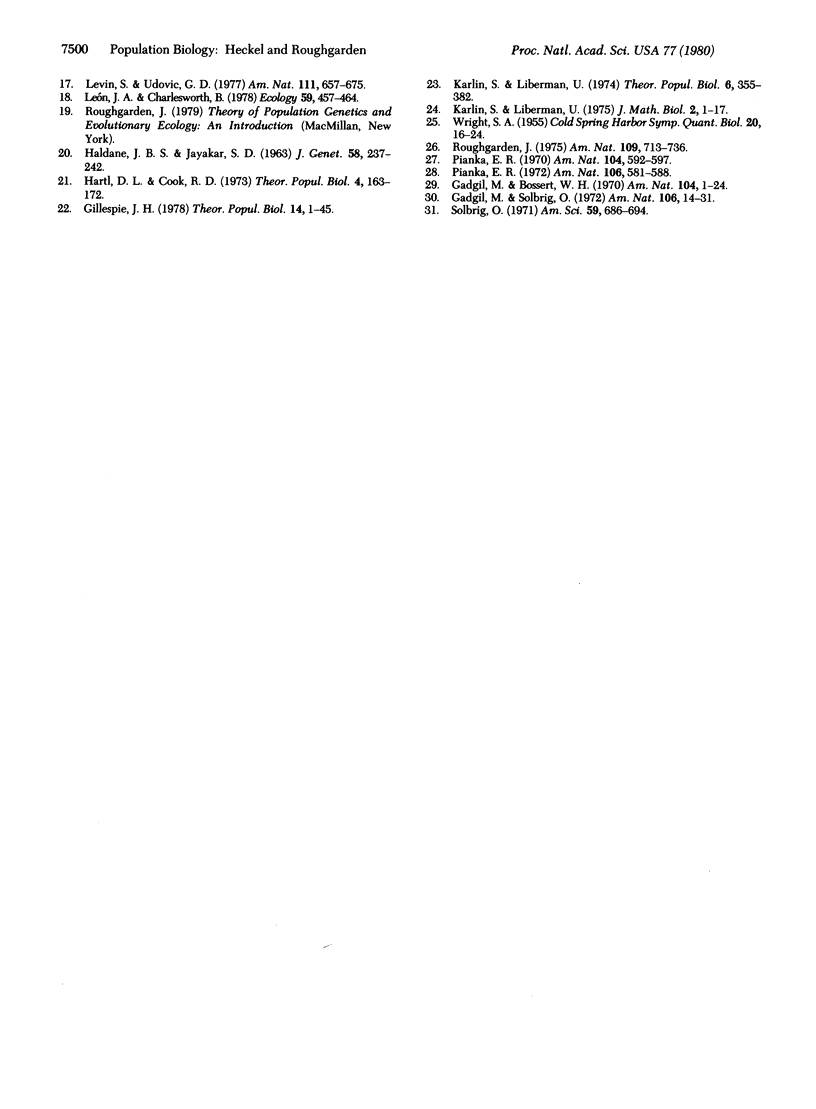Abstract
In one specific model of a density-regulated population undergoing natural selection in a fluctuating environment there is a systematic evolutionary pressure favoring a lower intrinsic rate of increase, which can sometimes even overcome an evolutionary pressure favoring a higher carrying capacity.
Keywords: density-dependent selection, evolutionary ecology, stochastic environments
Full text
PDF



Selected References
These references are in PubMed. This may not be the complete list of references from this article.
- Gillespie J. H. A general model to account for enzyme variation in natural populations. V. The SAS--CFF model. Theor Popul Biol. 1978 Aug;14(1):1–45. doi: 10.1016/0040-5809(78)90002-3. [DOI] [PubMed] [Google Scholar]
- Ginzburg L. R. Local consideration of polymorphisms for populations coexisting in stable ecosystems. J Math Biol. 1977 Dec 27;5(1):33–41. doi: 10.1007/BF00275804. [DOI] [PubMed] [Google Scholar]
- Ginzburg L. R. The equilibrium and stability for n alleles under the density-dependent selection. J Theor Biol. 1977 Oct 21;68(4):545–550. doi: 10.1016/0022-5193(77)90104-7. [DOI] [PubMed] [Google Scholar]
- Karlin S., Lieberman U. Random temporal variation in selection intensities: case of large population size. Theor Popul Biol. 1974 Dec;6(3):355–382. doi: 10.1016/0040-5809(74)90016-1. [DOI] [PubMed] [Google Scholar]
- Macarthur R. H. SOME GENERALIZED THEOREMS OF NATURAL SELECTION. Proc Natl Acad Sci U S A. 1962 Nov;48(11):1893–1897. doi: 10.1073/pnas.48.11.1893. [DOI] [PMC free article] [PubMed] [Google Scholar]
- Pimentel D. Population regulation and genetic feedback. Evolution provides foundation for control of herbivore, parasite, and predator numbers in nature. Science. 1968 Mar 29;159(3822):1432–1437. doi: 10.1126/science.159.3822.1432. [DOI] [PubMed] [Google Scholar]
- Roughgarden J. Resource partitioning among competing species--a coevolutionary approach. Theor Popul Biol. 1976 Jun;9(3):388–424. doi: 10.1016/0040-5809(76)90054-x. [DOI] [PubMed] [Google Scholar]
- WRIGHT S. Classification of the factors of evolution. Cold Spring Harb Symp Quant Biol. 1955;20:16–24D. doi: 10.1101/sqb.1955.020.01.004. [DOI] [PubMed] [Google Scholar]


